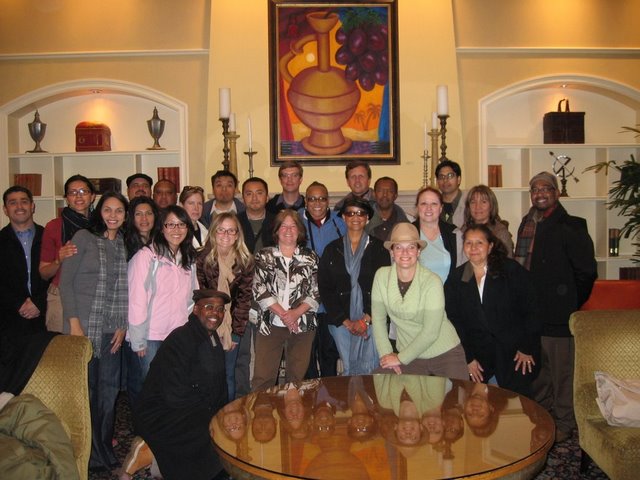
On the morning of April 9th, a delegation of community activists from South Los Angeles traveled to Portland, Oregon to study the public transit system.
April 11, 2009
“We live in a concrete jungle, plagued by never-ending traffic jams,†environmental activist Refugio lamented on a recent trip he took to Portland, Oregon. He was part of a delegation of community activists and agency representatives from South L.A. that the Los Angeles Department of City Planning flew out to Oregon. The delegation was anxious to learn about a service that Portland uses to connect its communities, as well as reduce their impact on climate change and air pollution: a world-renown public transit system. Upon arriving in Portland at the airport, they hopped onto a light-rail train that took them straight downtown, directly connecting them to their streetcar system. Once there, the streetcar line took them through various major thoroughfares, stopping in front of major points of interest such as businesses, health centers, affordable housing complexes, and libraries.
The South L.A. delegation was immediately struck with how integrated Portland’s rail system was into the street fabric of the city. In Los Angeles, the rail lines have boarding stops that are often located on somewhat removed locations — on the edge of town, up some steps, across security fences. In contrast, the streetcar system of Portland blended in, running through actual streets and stopping in front of actual entry ways — no steps required, quite a relief for the physically disabled. More of a refreshing surprise was to hear how Portland functioned before it broke ground for its commuter rail line. From the presentations that various city officials, college personnel, and business leaders gave to the South L.A. leaders, it was learned that Portland’s traffic and downtown area used to resemble Los Angeles’ as they function today. What became immediately evident was that the key to Portland’s success was that people worked together: from the Portland Office of Transportation to the Portland University Transportation Coordinator to the Transition Homeless Projects Director. Kick-starting the project, however, was challenging: they encountered institutional skepticism, public resistance to giving up parking lot spaces, and a limited pool of funds, among other hurdles. Presenters also made sure to note that their city is not the utopia that some visitors sometimes seem to think it is at first sight — for example, as of March ’09 Portland had an alarming 11% unemployment rate.
Yet, their past and current challenges just made their accounts of success more relatable. Los Angeles may seem like a collection of segregated communities, but it may soon take its first steps to fix that. One first step that has the potential to revitalize and connect instead of gentrifying neighborhoods, thus laying the framework for further blending of space is the Revitalization of the Los Angeles River, which seeks to restore the L.A. River into its more natural-looking condition and connect communities through bike lanes and open communal recreational spaces along its path. Another project that has the potential to promote unity in Los Angeles is the development of the Expo Line rail, which is slated to be completed within the next few years and will allow people to travel from Downtown L.A. all the way to Santa Monica beach. Overall, the South L.A. “infiltration†of Portland served as an inspirational illustration of the inter-connectedness that can be achieved by the cooperation of communities. It also showed that what was achieved provided not merely a convenience but something of absolute necessity. “The challenges may seem enormous to us Los Angelinos,†Refugio cautioned, “but perhaps we should take it one step at a time and do what Portlanders did when they tackled their enormous problems: just start reconnecting.â€